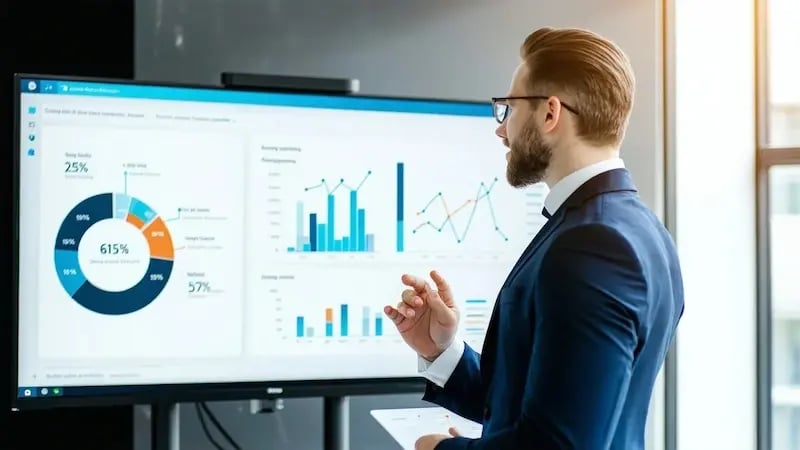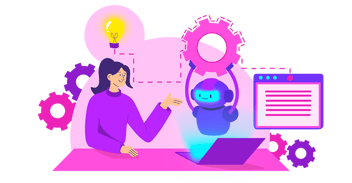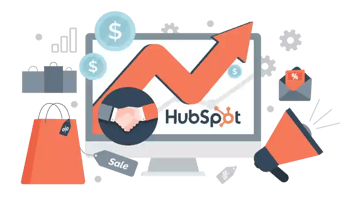Delight & Convert: Strategies for Enhancing the B2B Sales Experience
Are you truly differentiating your sales approach in today's competitive B2B landscape? In a world saturated with information, where B2B buyers are more informed and discerning than ever, simply having a great product or service is no longer enough. The buying journey has fundamentally shifted, placing an unprecedented emphasis on the experience itself. In fact, according to Gartner, an astounding 80% of future revenue will come from just 20% of your existing customers. This highlights the immense, long-term value of cultivating a positive experience right from the outset.
But what does it truly mean to "delight" a B2B prospect? It extends far beyond a simple transaction or a well-received demo. It's about creating a seamless, insightful, and genuinely helpful journey that makes your prospect feel understood, valued, and confident in their decision. A superior B2B sales experience isn't just a desirable perk; it's a strategic imperative for driving robust conversions and building lasting relationships.
Below, we will explore actionable sales strategies and practical sales tips designed to transform your sales pipeline into a highly efficient conversion engine. We'll delve into the nuances of effective prospect engagement and show you how to truly elevate your B2B sales efforts.
The Foundation of Delight: Understanding Your B2B Prospect
How well do you really know your ideal B2B prospect? In many organizations, the understanding often stops at basic demographics. However, to genuinely delight, you need a far more granular insight into their world. This means diving deep into buyer personas – uncovering their specific pain points, overarching aspirations, key decision-making criteria, and even preferred communication channels.
Imagine Sarah, a Head of IT in a mid-sized manufacturing firm. Her priorities aren't merely about cost savings; she focuses on minimizing downtime and future-proofing her infrastructure. If your sales approach for Sarah only addresses budget, you're missing the critical elements that will truly resonate with her. Understanding these nuances allows you to tailor your approach in a way that feels incredibly personal and relevant.
Are you aligning your sales efforts with your prospect's journey, or are you forcing them down your own predetermined path? It's a critical question. The typical B2B buyer's journey involves awareness, consideration, and ultimately, a decision. What's crucial to recognize is that buyers are already significantly through their journey before engaging with sales. Reports from CEB indicate that B2B buyers are 57% of the way through the purchase process before even contacting a sales representative. Understanding this self-education phase allows your team to enter the conversation prepared to add specific, targeted value rather than starting from square one.
How do you ensure your message resonates individually in a mass communication world? The power of personalization cannot be overstated. Personalized interactions, carefully tailored content, and relevant case studies are absolutely critical for meaningful prospect engagement. For instance, instead of offering a generic product demonstration, customize it to directly address the specific challenges or opportunities you identified during your discovery conversations. This shows you've done your homework and are genuinely invested in their unique situation.
Strategies for Delighting Prospects Throughout the Sales Journey
Delighting prospects is not a single act but a continuous process woven into every interaction. Let's break down how to achieve this across the key phases of the sales journey.
Phase 1: Initial Engagement and Discovery – Setting the Tone
Are you truly listening, or just waiting for your turn to speak? Active listening and genuine empathy are foundational. It's not enough to ask questions; you must deeply process the answers to uncover underlying needs and motivations. This means asking insightful, open-ended questions, encouraging prospects to share their challenges and aspirations. A positive initial experience sets the stage for everything that follows. Consider this: Salesforce research found that 89% of customers are more likely to make another purchase after a positive customer service experience – and this experience begins the moment of initial engagement.
What unique value are you offering in your first interaction? Move beyond the traditional "pitch" and focus on providing value-driven outreach. This could involve sharing valuable industry insights, relevant market trends, or potential solutions to common pain points – all before you even begin to discuss your product or service. This approach positions you as a trusted advisor, not just another vendor, making the entire B2B sales experience more positive and less transactional.
Is your follow-up process building relationships or just checking a box? The art of the follow-up is often underestimated. Generic, template-based follow-ups quickly lose their impact. Instead, ensure your follow-ups are personalized, timely, and continue to add value. Reference previous conversations, provide additional resources, or suggest next steps that are clearly beneficial to the prospect. It's the difference between sales enablement and having sales training; that human touch to deliver a personalized experience, rather than just a "sale."
Phase 2: Solution Presentation and Collaboration – Building Trust
Are your presentations generic, or do they speak directly to the prospect's needs? When it comes to demonstrations and presentations, customization is king. Resist the urge to use a one-size-fits-all approach. Your demos should be highly tailored, highlighting specific features and benefits that directly address the prospect's pain points and unique use cases. For example, instead of broadly listing features, show Sarah how your solution directly solves her IT downtime problem, illustrating with real-world scenarios relevant to her industry.
Are you a vendor or a strategic partner? Collaborative problem-solving fosters trust and demonstrates your commitment. Involve prospects in the solution design process. Ask for their feedback, adapt your proposals based on their input, and work together to craft a solution that truly fits their needs. Forrester reports that companies with a customer-centric culture grow revenue 17% faster than their less customer-centric counterparts, underscoring the tangible benefits of this collaborative approach.
Are you being upfront about limitations, pricing, and implementation? Transparency and trust are non-negotiable. Be honest about what your solution can and cannot do, provide clear and comprehensive pricing, and set realistic expectations for implementation. Clear communication at every stage builds credibility and avoids unwelcome surprises, making the entire process more agreeable for the prospect.
Phase 3: Negotiation and Closing – Seamless Transition
Is your closing process creating friction or clarity? A seamless contracting and onboarding process is crucial for converting a delighted prospect into a happy customer. Simplify contracts, clarify terms, and ensure a smooth, well-communicated handover to your implementation or customer success teams. A friction-free closing experience is paramount for driving conversions.
Does your engagement end when the contract is signed? Your relationship with the customer should not conclude at the point of sale. Briefly touching on the importance of post-sale follow-up to ensure satisfaction and reinforce the value delivered lays the groundwork for future growth, upsells, and valuable referrals.
The Role of Sales Enablement in Supercharging Your B2B Sales Experience
How is your organization equipping its sales team to deliver a delightful experience successfully? This is where sales enablement comes into play. Sales enablement is about providing your sales teams with the content, training, and tools they need to engage buyers effectively and efficiently throughout the sales process. It's the engine that powers a truly exceptional B2B sales experience.
As discussed in various resources, including our insights on "the key to SaaS sales growth: a strong sales enablement framework" and "is sales enablement really worth the investment," strategic enablement is not merely an overhead; it's a critical investment with significant returns.
Effective sales enablement directly contributes to a superior B2B sales experience by:
-
Providing Relevant Content: Equipping sales representatives with personalized case studies, industry-specific data, compelling collateral, and ready-to-use insights at precisely the right moment in the buyer's journey.
-
Delivering Effective Training: Offering ongoing training in areas like active listening, advanced objection handling, and value-based selling techniques, ensuring reps are always sharp and confident.
-
Offering Cutting-Edge Tools: Implementing and optimizing CRM systems, sales intelligence platforms, and proposal automation tools that streamline administrative processes and free up sales professionals to focus on building meaningful relationships.
CSO Insights reports that companies with effective sales enablement achieve 15.6% higher win rates on forecasted deals. This is not a coincidence. It's a direct result of empowering sales teams to be more efficient, more effective, and more capable of moving prospects seamlessly towards conversion. When your sales strategies are powered by robust sales enablement, your sales pipeline truly transforms into a conversion machine.
Measuring Success: Metrics for a Delightful B2B Sales Experience
Are you tracking the right metrics to gauge the effectiveness of your sales experience? It's crucial to look beyond just closed-won deals. While revenue is the ultimate goal, understanding the journey there is key.
How are you leveraging this data to refine your approach and ensure ongoing delight? Regularly analyzing these metrics and gathering direct prospect feedback allows for continuous improvement and adaptation of your sales strategies. This iterative process ensures that your B2B sales experience consistently evolves to meet and exceed market expectations.
Consider tracking:
-
Customer Satisfaction Scores (CSAT) are specifically related to sales interactions.
-
Net Promoter Score (NPS) for new clients, providing insights into their initial satisfaction and likelihood to recommend.
-
Sales cycle length, indicating efficiency.
-
Deal velocity measures how quickly deals move through your pipeline.
-
Conversion rates at each distinct stage of your sales pipeline pinpoint bottlenecks and areas for improvement.
The Future of B2B Sales is Experiential
In today's dynamic B2B landscape, a remarkable sales experience is no longer optional; it's the cornerstone of sustained growth and competitive advantage. It's the crucial differentiator that allows you to truly delight prospects and ensure your B2B sales experience leads to exceptional conversions.
The imperative for sales organizations is clear: prioritize delighting prospects at every touchpoint. Remember, the journey from prospect to loyal customer is paved with positive, insightful, and memorable interactions.
Transforming your sales pipeline into a conversion powerhouse requires more than just good intentions; it demands strategic implementation and continuous optimization. This is where organizations like Aspiration Marketing excel. With a deep understanding of sales enablement principles and a proven track record in optimizing the B2B sales experience through tailored sales strategies, we help businesses like yours implement the frameworks and processes necessary to truly delight prospects and accelerate growth.
Let us help you unlock the full potential of your B2B sales efforts.
This content is also available in:
- German: Begeistern & Bekehren: Top-Strategien für B2B-Verkaufserlebnisse
- Spanish: Deleite y convierta: Estrategias para mejorar la experiencia B2B
- French: Délecter et convertir : Optimiser l'expérience de vente B2B
- Italian: Deliziare e convertire: Strategie per migliorare l'esperienza B2B
- Romanian: Delight & Convert: Strategii pentru optimizarea experienței B2B
- Chinese: 愉悦与转化:提升 B2B 销售体验的策略

Joachim is a certified HubSpot trainer with over 13 years of experience in content marketing, strategy, website development, and SEO. He has implemented numerous large-scale, international growth marketing programs, including one with UiPath, which grew from a startup to a successful IPO on the NYSE. Joachim has special expertise in multilingual marketing and sales enablement projects, and he uses the latest AI technologies to help our clients.









Leave a Comment